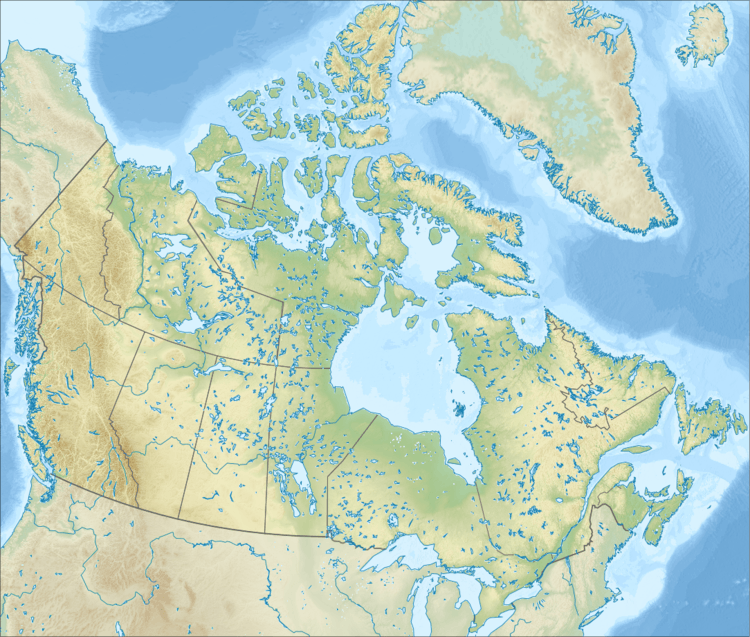Mount Cap formation
The Mount Cap Formation is a geologic formation exposed in the Mackenzie Mountains, northern Canada. It was deposited in a shallow shelf setting in the late Early Cambrian,[1] and contains an array of Burgess Shale-type microfossils that have been recovered by acid maceration.[2]
| Mount Cap Formation Stratigraphic range: Cambrian | |
|---|---|
| Type | Formation |
| Lithology | |
| Primary | Shale, siltstone |
| Other | Sandstone |
| Location | |
| Coordinates | |
| Region | Northwest Territories |
| Country | |
 Mount Cap formation (Canada) | |
Description
The formation is 100 to 300 metres (330 to 980 ft), and comprises shales, siltstones and sandstones with a high glauconite content.[1] It has been exposed to remarkably little metamorphic activity given its great age; it is dated to the Bonnia–Olenellus Trilobite Zone.[1] This zone lies within the Lower Cambrian Waucoban stage in North America, which is equivalent to the Caerfai in Wales, and thus the Comley of England,[3] and has yet to be formally ratified. Nevertheless, this makes it just younger than the earliest trilobites, and thus the earliest known Burgess Shale-type deposit, though this is disputable when considering the age of Chengjiang County fauna. Its organic-walled fauna, known as the "Little Bear biota", includes both non-mineralized and originally-mineralized taxa, including hyolith and trilobite fragments, anomalocaridid claws, arthropod carapaces and brachiopods.[4]
See also
- List of fossiliferous stratigraphic units in Northwest Territories
References
- Butterfield, N. J. (1994). "Burgess Shale-type fossils from a Lower Cambrian shallow-shelf sequence in northwestern Canada". Nature. 369 (6480): 477–479. Bibcode:1994Natur.369..477B. doi:10.1038/369477a0.
- Harvey, T.; Butterfield, N. (2008). "Sophisticated particle-feeding in a large Early Cambrian crustacean". Nature. 452 (7189): 868–871. Bibcode:2008Natur.452..868H. doi:10.1038/nature06724. PMID 18337723.
- Siveter, D. J.; Williams, M. (1995). "An early Cambrian assignment for the Caerfai Group of South Wales". Journal of the Geological Society. 152 (2): 221–224. Bibcode:1995JGSoc.152..221S. doi:10.1144/gsjgs.152.2.0221.
- Butterfield, N. J.; Nicholas, C. J. (1996). "Burgess Shale-Type Preservation of Both Non-Mineralizing and 'Shelly' Cambrian Organisms from the Mackenzie Mountains, Northwestern Canada". Journal of Paleontology. 70 (6): 893–899. doi:10.1017/S0022336000038579. JSTOR 1306492.
External links
- Various Contributors to the Paleobiology Database. "Fossilworks: Gateway to the Paleobiology Database". Archived from the original on 31 July 2014. Retrieved 8 July 2014.